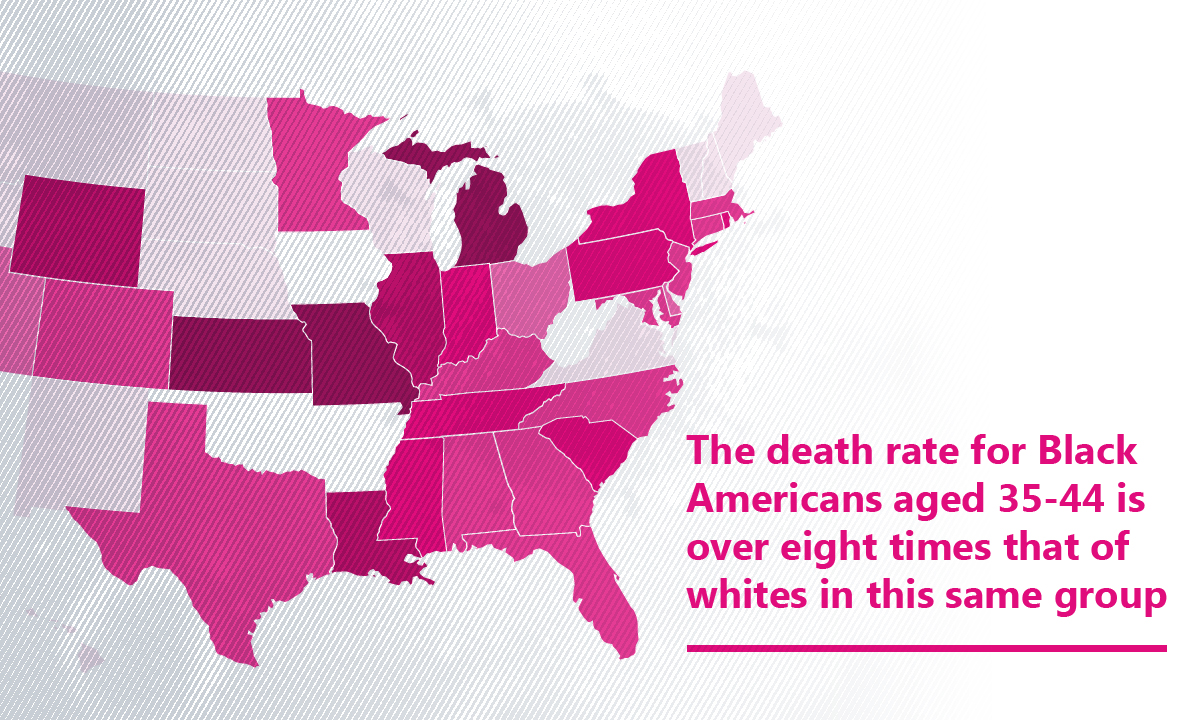Population and society
Black Americans make up 13% of the US population. They make up 23% of COVID-19 deaths.

The average cost of raising a child in the US from birth through age 17 increased by 16% since 1960. In 1960 (when this data was first collected), middle-income, married couples spent an average total of $259,711 on a child through age 17, adjusted for inflation to 2023 dollars[1]. By 2015 — the latest data available on child-rearing costs — these estimated expenditures had increased to $300,322.
The cost of childbirth has steadily increased over the last two decades. In 2020 — the most recent data available — hospitals charged[2] patients an average of $27,938 for pregnancy and childbirth procedures, adjusted for inflation. That is nearly two and a half times the average charges in 2000 ($11,218), according to data from the Agency for Healthcare Research and Quality.
While this is what a hospital charges for the stay, how much families pay depends on their insurance, among other factors.
According to data from the US Department of Agriculture (USDA), middle-income families (families making $76,106–$138,070 in 2023) spent an average of $15,877 to $17,869 annually to raise a child in 2015 (depending on the age of the child).
The USDA publishes a report on child expenditures by family, reporting expenses by age of child, household income, family budgets, and region of the country. Its latest report, released in 2017, analyzes data from 2015 and prior.
You are signed up for the facts!
For a middle-income family, housing accounts for the largest share of child costs at 28%. Food is the second largest cost to raise children at 18%. Childcare and education together are the third-largest expense at 16%, followed by transportation at 15%.
According to the USDA, housing costs include any form of shelter (mortgage payments, property taxes, rent, and/or insurance), utilities (gas, electricity, fuel, cellphone, and water), and house furnishings and equipment.
Childcare and education expenses include daycare tuition, babysitting and other childcare costs, and tuition for private schools.
Note that these costs exclude college spending after the child turns 18. College expenses have increased in recent years: according to the USAFacts Government 10-K, the annual cost of undergraduate education rose 18% from 2011 to 2021.
Transportation expenses include vehicle payments, gas expenses, maintenance and repairs, insurance, and public transportation costs.
In 1960, childcare costs were mostly for in-home babysitting. But, as more women joined the labor force, demand for outside care increased.
From 1960 to 2015, the inflation-adjusted cost of childcare and education rose by 825%, healthcare by 160%, and housing and transportation by 8% each. Meanwhile, clothing costs dropped by 37%, and food costs fell by 13%. Miscellaneous spending decreased by 33%.
Childcare and education went from 2% of child-raising costs to 16%, the biggest increase of any category.
Methodology changes are likely impacting that increase, too. In 1960, the childcare and education figure included total cost for all families, even if they spent nothing in this category (in which case, their lack of expenditure would bring the average down). By 2015, the figure only included families that had some expenditures within the category.
Childcare costs have risen in recent years as well. According to Census Bureau data, family childcare costs increased 17% between 2012 and 2021.
The USDA reports child costs in 2015 by the lower (<$76,106), middle ($76,106–$138,070), and upper (>$138,070) thirds of the income distribution. As household income rises, so does the average amount spent on raising children.
For example, families in the lower income group in a married-couple, two-child household, spent a range of $11,990 to $12,830 per child.
Families in the highest income group spent around twice that amount per child: between $24,900 and $30,060.
For all income levels, expenditures on children were the highest when they were between the ages of 15 and 17. It’s at these ages that spending on transportation, healthcare, and food peaks.
What families spend depends on children's ages. Early in life, childcare expenses are a larger share of the costs. Childcare and education expenses were highest for children younger than 6 for the low- and middle-income demographics. As children reach school age, food costs trend upwards for all income brackets, while childcare costs for low- and middle-income families drop. For higher-income families, the cost of childcare and education remained high from birth through high school.
Married couples in the urban Northeast spent the most on children, followed by families in the urban West and urban South. Child costs for rural families throughout the country were 27% lower than the urban Northeast, primarily due to lower housing and childcare costs.
The USDA releases the “Expenditures on Children by Families” report, which “may be used in developing State child support guidelines and foster care payments, as well as in public health and family-centered education programs."
The data is based on the expenditures of married-couple families with two children. Those costs are averaged to estimate the expenditures on a per-child basis. The report estimates that expenditures for raising an only child are about 27% higher. Families with more than two children pay about 24% less per child.
Learn more about the costs of raising a child and K-12 education. Get the data directly in your inbox by signing up for our newsletter.
We adjust for inflation over time in order to place the figures in this article in proper context, as well as to make figures comparable over time.
According to the Department of Health and Human services, costs tend to reflect the actual costs of production, whereas charges represent what the hospital billed for the stay. Total charges were converted to costs using cost-to-charge ratios based on hospital accounting reports from the Centers for Medicare and Medicaid Services (CMS).
Population and society
Population and society
Population and society
Population and society
Newsletter
Keep up with the latest data and most popular content.


